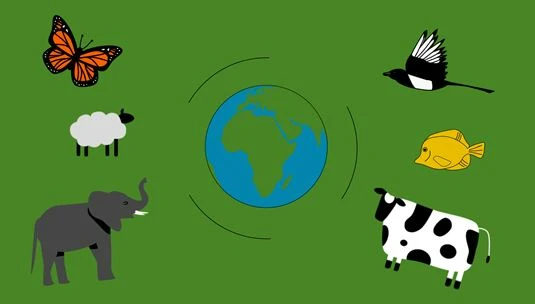Biodiversity and the circular economy: why it matters
Biodiversity loss is one of the biggest threats to human existence – but the circular economy can help us restore the natural order on our planet.
20/06/2022

Biodiversity keeps our planet alive. It maintains the food chains of the animal kingdom, it controls animal and plant populations, and it keeps everything in check and balance to ward of natural disasters such as
flooding.
But our take, make, waste system is threatening biodiversity. Today, more than 90%1 of our biodiversity loss is because of human extraction of natural resources such as animals, trees and water from the planet.
Biodiversity loss is one of the greatest threats to human existence. It causes soils to be barren and hold no nutrients; it triggers species extinction and displacement and it changes the safety of our water.
Conservation eforts, while crucial, are not enough to restore the natural balance of our planet. We need to change our entire system to ensure our future. The circular economy can help us to restore biodiversity on our planet through re-thinking farming, eliminating pollution and waste, and making better use of the materials we already have in circulation.
In 2019, humanity was using the world’s natural resources at a rate 1.75 times faster than the planet can regenerate them2. Regenerative agricultural approaches such as agroecology, agroforestry and managed grazing can undo the damage of monocultural crops and overfarming.
Through planting a variety of crops together and harnessing the Earth’s natural processes to manage crop growth, we can restore soil health and encourage natural pollinators such as bees to thrive in healthy populations.
https://ellenmacarthurfoundation.org/topics/biodiversity/overview

Through planting a variety of crops together and harnessing the Earth’s natural processes to manage crop growth, we can restore soil health and encourage natural pollinators such as bees to thrive in healthy populations.
The circular economy can also help us to manage our rate of demand on the planet, stopping harmful processes such as overfshing, which is a direct cause of biodiversity loss in our oceans. Through proper management of the resources we have in circulation, such as plastic waste, the circular economy can also help us reduce pollution, which is a huge threat to biodiversity.
It will also see us redesigning new products to take as few virgin materials as possible from the planet, encouraging nature to live and thrive undisturbed.
Intesa Sanpaolo is the frst strategic fnancial services partner of the Ellen MacArthur Foundation, whose mission is to make the circular economy a reality.
Read the report to fnd out more about how the circular economy can help us restore the crucial biodiversity of our planet.
2 https://emf.thirdlight.com/link/bqgxl2mlprld-v7i2m6/@/#id=0

